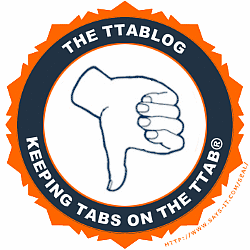The Ten Worst TTAB Decisions of 2006? [Part 1 of 2]
As I reminded readers last year, Babe Ruth failed to hit safely 65% of the time and Michael Jordan missed about half his shots. So is it any wonder that, out of the 500 or so final decisions issued by the TTAB in 2006, there were a few duds? I list below what I believe to be the ten worst decisions of 2006. Obviously, these are subjective judgments, and some of you may disagree with one or more of my selections. My response: you're wrong.

In re Xcaliber Int’l Ltd., Serial No. 78360389 (September 15, 2006). In a decision that caused me to choke on my chaw, the Board affirmed a Section 2(e)(4) refusal to register the mark CHISHOLM for smokeless tobacco, finding the mark to be primarily merely a surname. Applicant submitted Internet pages discussing the Chisholm Trail (a route used for cattle drives from Texas to Kansas during the late 1800s), and asserted that the primary significance of CHISHOLM is the name of the trail, but the Board would not be driven in that direction. It agreed with the PTO that "the question before us is not the significance of Chisholm Trail but of CHISHOLM alone." The Board opined that "the renown of Shirley Chisholm as the 'first black woman elected to the House of Representatives' and a 14-year member of Congress, indicates that consumers would be more likely than not to perceive CHISHOLM as a surname." [There was no evidence, however, that Ms. Chisholm used smokeless tobacco - ed.]. In any case, the Board dubiously asserted that "even among consumers with a keen sense of history, who may think of the Chisholm Trail when confronted with the term CHISHOLM alone, these history buffs are also likely to know that the trail was named after an individual." (TTABlogged here).
In re GoSMILE, Inc., Serial No. 76518244 (January 20, 2006). The Board affirmed a Section 2(d) refusal of the mark GOSMILE PM for toothpaste, finding the mark likely to cause confusion with the registered mark P.M. for "toothpaste and gel." Applicant GoSMILE argued that the first du Pont factor, the dissimilarity of the marks, was dispositive. It contended that the dominant feature of its mark is GOSMILE (a registered mark in itself), that the PM portion of its mark was disclaimed as required by the Examining Attorney because of its descriptiveness, and that the first portion of a mark is often "that which catches the consumer's eye." But the Board did not smile on Applicant's arguments. It pointed out that the PTO had failed to cite any evidence to support the disclaimer requirement [perhaps because the Examining Attorney and the Applicant felt none was needed - ed.] and it oddly asserted that "GOSMILE and PM are not combined in a manner which in any way alters the impression of PM alone." The Board then concluded that "consumers are just as likely and perhaps even more likely to view GOSMILE PM as identifying another product from the owner of the P.M. mark as they are to view it as a new product from the owner of the GOSMILE mark." (TTABlogged here). Applicant then sought review by way of civil action (here), and eventually entered into a stipulation returning the case to the PTO and re-opening prosecution (here).
In re TelechaT Network, Inc., Serial No. 76535248 (May 11, 2006). Although the meaning of the term TELECHAT seems obvious, the Board reversed a PTO requirement that this Applicant disclaim the word TELECHAT in its mark shown below [NETWORK disclaimed] for "telephone and on-line dating service allowing participants to select, obtain and provide information and communicate with potential companions."

The Examining Attorney relied on dictionary definitions of "tele" and "chat," and on several database and Internet printouts that included the term "telechat." The Board, however, was not convinced: "While consumers may understand that the term can mean using the telephone to converse in an easy, familiar manner with potential companions, it is not at all clear that consumers will draw this conclusion. *** When the terms are combined, they create a term that appears nebulous and non-specific." The Board resolved its doubt (as it must) in Applicant's favor. (TTABlogged here).
In re JMH Productions, Inc., Serial No. 76608812 (August 25, 2006). My mind's eye had little difficulty in envisioning the meaning of the mark MISS NUDE CENTERFOLD SEARCH for this Applicant's adult videotapes, CD-ROMs, DVDs, and entertainment services. The Board, however, found that some thought or imagination would be required in order to discern the meaning of the mark, and it therefore reversed a Section 2(e)(1) refusal to register. Applicant made of record 28 registrations for marks that include the wording "MISS (or MS.) NUDE" combined with other words -- generally geographic or place names. (e.g., MISS NUDE KENTUCKY), arguing that the PTO's position was clearly inconsistent with prior and present practice of the Office. The Board observed that third-party registrations, while not establishing binding precedent, "may in general be given some weight to show the meaning of a mark in the same way that dictionary definitions would be so used." Here, the Board agreed with the PTO that the phrase NUDE CENTERFOLD SEARCH is merely descriptive of Applicant’s goods and services, but concluded that the word MISS would be viewed as a "courtesy title or form of polite address for a young woman selected as the winner .... but it does not merely describe such designations or categories with any degree of particularity nor constitute its own subject matter." [If NUDE CENTERFOLD SEARCH is merely descriptive, doesn't the addition of the laudatory term MISS make the phrase even more so? - ed.] (TTABlogged here).
Johnson & Johnson v. Natural Thoughts, Inc., Opposition No. 91122373 (January 10, 2006). In a simply awful decision, the Board sustained a Section 2(d) opposition to registration of the mark DUAL-PURPOSE MASSAGE CREME for "massage creme," finding the mark likely to cause confusion with the registered mark PURPOSE for moisturizers. The Board not surprisingly deemed the involved goods to be related, based in part on Applicant's own advertising indicating that moisturizing is one purpose of its creme. As to the marks, the Board recognized PURPOSE to be not a particularly strong mark: evidence of third-party use of the word "purpose" as part of their product brand names "suggests that the public distinguishes between various marks containing this word by looking to other distinctive parts of those marks." However, the Board gave "greater weight to the DUAL-PURPOSE portion of applicant's mark" and questionably concluded that the involved marks "are similar in commercial impression." (TTABlogged here).
[Part 2 of this two-part posting will appear tomorrow.]
Text Copyright John L. Welch 2007.




0 Comments:
Post a Comment
<< Home